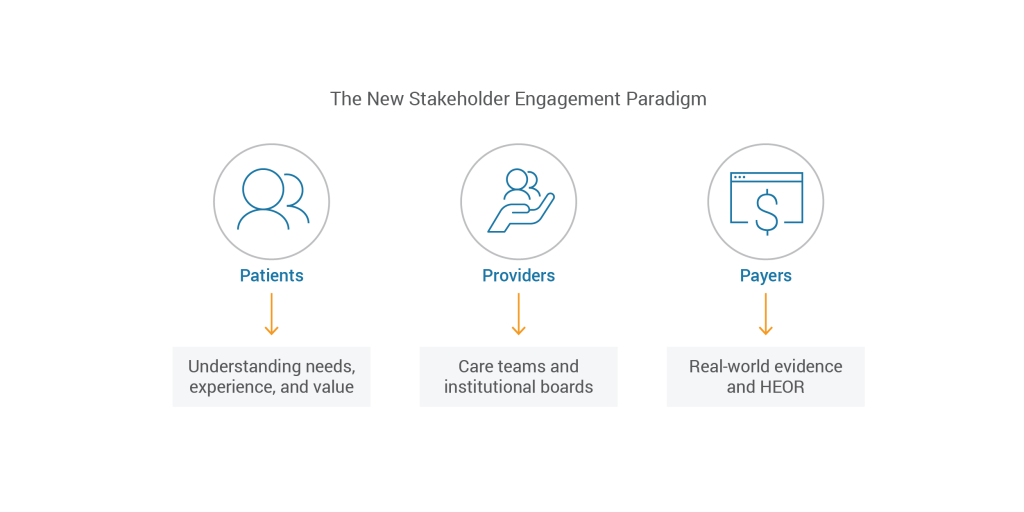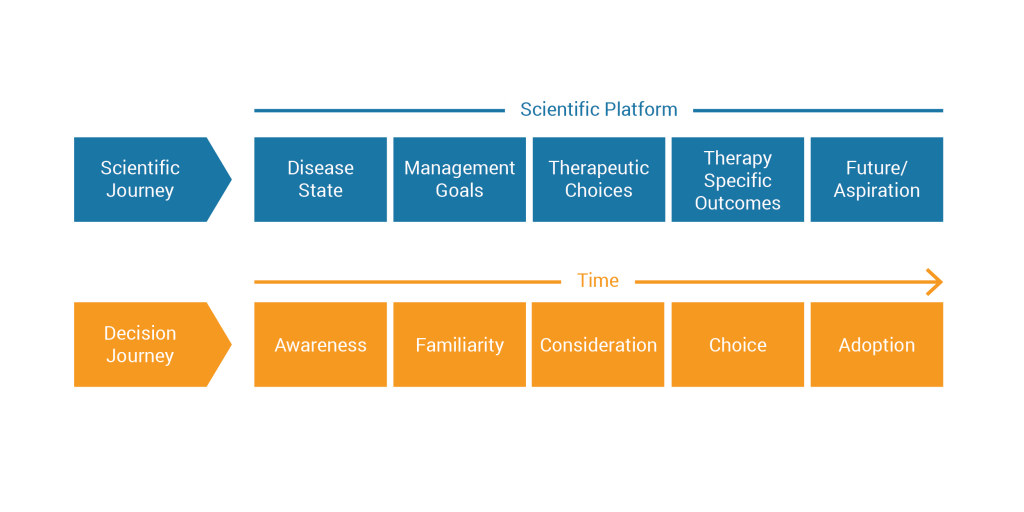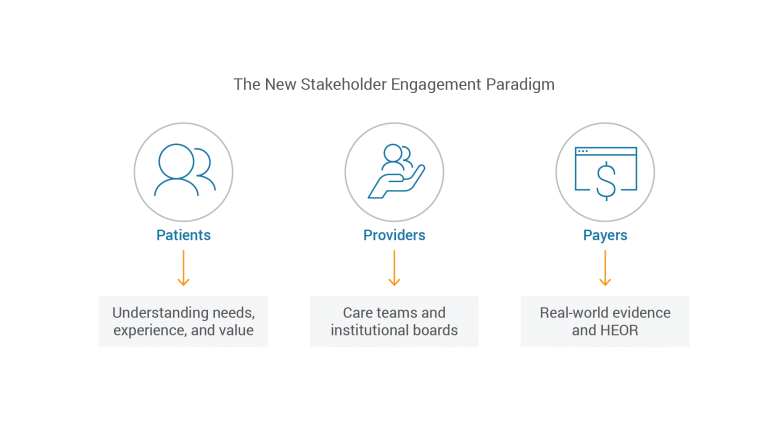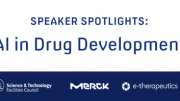How Europe can reinvent the medical affairs model in the era of precision medicine
Europe is an innovation hub for life sciences. In the past year, 32% of advanced therapy products in phase III trials began in Europe. As more of these sophisticated therapies come to market, medical affairs companies will lead the shift towards an evidence-focused HCP engagement model.
At the same time, medical affairs professionals will have to contend with unique regulatory challenges, such as the GDPR, and reimbursement challenges linked to the rising cost of specialty treatments.
There has been a sharp spike in maximum treatment costs in Europe. Multiple specialty medicines cost over €300,000, and some now exceed €1.5 million. These advanced treatments are needed to treat rare diseases, but they are also putting cost pressures on governments with pre-determined healthcare budgets. The responsibility to justify the high cost of precision treatments falls to medical affairs teams who will have to develop innovative reimbursement models based on scientific evidence, health economic outcomes research, and outcomes-based pricing strategies.
Regulatory developments, precision medicine, reimbursement challenges, and a rapidly evolving stakeholder environment are all driving significant change across the life sciences sector. Companies are racing to modernize their business strategy, and medical affairs is ideally positioned to lead the transformation. By modernizing HCP engagement, embracing digital engagements, personalizing content, incorporating real-world medical evidence, and demonstrating value through measurable objectives, medical affairs can become a core strategic function that drives organizations to become more data-driven and stakeholder focused.
Modernizing customer engagement
Precision medicine is driving healthcare towards a more stakeholder-centric model that includes patients, providers, and payers.
Patient engagement will need to move from purely compliance to understanding needs, experiences, and value. More active collaboration between patients and providers will require medical affairs to develop new strategies to better understand the patient experience.
Previously a single healthcare provider was responsible for treatment decisions. Now there is a shift towards decentralized decision-making. Care teams that are subject to institutional boards, advocacy groups, formularies, pathways, and protocols are collectively determining treatments.
As increasingly expensive therapeutics come to market, payers face a rising cost burden. Payers are demanding more real-world evidence to justify the higher prices even as patients (and patient advocacy groups) place more pressure on governments to make more medication options for rare diseases available.

Medical affairs is in a unique position to meaningfully engage with each of these three key stakeholder groups by providing both evidence and scientific expertise.
Improved stakeholder collaboration creates mutually beneficial partnerships. Medical affairs is best placed to move engagement away from the physician preference model to one that prioritizes ideal pathways and protocols for managing more complex care delivery. Real-time insight exchanges across groups and a focus on which patients will benefit the most, will lead to more actionable conversations between healthcare bodies and pharmaceutical companies.
“There is a real benefit to having wider stakeholder engagement but it’s also a matter of resourcing,” says Fabio Ferfoglia, associate director of European medical affairs operations at Incyte, a global biopharmaceutical company focused on finding solutions for serious unmet medical needs through the discovery, development and commercialization of proprietary therapeutics. “You have to justify it by really showing the value.”
Adapting to Changing HCP Preferences
The HCP community in Europe is undergoing a dramatic change. Eurostat’s most recent data reveals that, in 11 EU Member States, HCPs aged 35 – 49 make up the largest share of health workers. In three EU Member States health workers aged 15-34 represented the largest share of HCPs.1
As physicians retire, a new generation establishes itself as the decision makers. This younger cohort of ‘digital native’ physicians have greater expectations when it comes to using technology in their daily work routines. The pharmaceutical industry can better engage with HCPs by optimizing engagement and leveraging the right channels at the right time.
Dr Enrique Grande, head of oncology at the MD Anderson Cancer Center Madrid, values the rapid delivery of new scientific resources in a more efficient digital channel: “I can’t afford to see all MSLs every month. Proactive MSLs that send articles and [clinical] resources are extremely useful to me. They are saving me time and making my life a little bit easier. Let’s save time and money. Just send me the email.”
Recently, there has been a dramatic increase in digital engagements due to COVID-19. In a matter of just two weeks, there was a four-fold increase in field user-triggered emails and a ten-fold increase in virtual engagements. By deepening scientific interactions through a holistic, multichannel engagement strategy, MSLs can compliantly engage physicians throughout their scientific journey in a way that was not possible beforehand.
Personalizing Content Along the HCP Journey
Scientific communication is designed to disperse evidence-based concepts into clinical practice. To maximize the impact of scientific engagement, content needs to reflect an individual HCP’s preferences and how familiar they are with a specific treatment.
Many organizations assign this responsibility to their field teams instead of centrally managing the process. One near universal agreement across life sciences is that personalization works best when left to MSLs because of the strength of their relationship with the HCP
“Scientific content is effective when it is tailored to specific stages along the physician journey. We need to focus on the needs of the physician at that particular moment,” says Fabio Ferfoglia, associate director of European medical affairs operations at Incyte
The multichannel paradigm for medical affairs (including medical CRM, email, remote meetings,
and events) enables organizations to better collaborate with experts and other stakeholders. MSLs can determine scientific needs and interests by reporting on the evidence that is consumed by a specific HCP, and how it evolves over time.
Using this strategic insight from HCPs’ consumption of evidence over time and across channels can help strengthen relationships by guiding decisions on the cadence and focus of engagement. For example, engagement content targeted at raising awareness of a treatment or disease can indicate a need for educational outreach around safety and efficacy. Life sciences companies can maximize the use of scientific content by aligning to the HCP journey from scientific need to advocacy.

Modernizing Content Delivery
Nearly all medical affairs leaders will agree that quality is much more important than quantity when it comes to scientific content. However, most believe that how this content is delivered needs to be updated for the digital age.
Medical departments still rely heavily on slides for sharing information. One large pharma company estimates that each slide costs over €500 to create, leading to slide decks that cost tens of thousands of euros. Meanwhile, another company’s internal audit indicated that MSLs only used 25 specific content pieces out of the hundreds of assets they had developed. Clearly, there is an opportunity to optimize the process.
Adapting content for more digitally minded physicians requires evolving beyond purely text-based information. “Commercial teams are developing a lot of new visual content while medical affairs everywhere are stuck on the ‘death by PowerPoint’ approach,” comments Glen Morris, worldwide field medical business solutions lead at Bristol-Myers Squibb. “Medical just doesn’t have the same budgets [as commercial] but has to manage the additional protections required by compliance.”
Making Better Use of Medical Insights
Medical insights, real-world evidence, and health economics and outcomes research (HEOR) data are the key ingredients to a medical affairs-led industry transformation. To maximize the value of insights, companies need a structured process to gather, disseminate, analyze, and action insights. Decisions must be based on the latest available science, with evidence-generation backed by solid processes to gather and disseminate scientific insights.
Jorge Aguado, director of global medical excellence at Allergan comments, “Across the industry, there are two key challenges to getting medical insights: MSLs should be properly trained to recognize and capture insights, and the insights have to get back to the right people within the organization to shape strategy.”
Insights provide a complete view of the patient journey over time, covering the spectrum from early disease state education, to management goals, therapeutic choices and therapy-specific outcomes, all the way to future goals.
The aim is to identify actionable insights that inform medical strategies, improve interventions, and lead to better patient outcomes. This relies on a combination of both human and artificial intelligence (AI) to generate, understand, and action the insights.
Medical affairs leaders can take three steps to make the most out of medical insights:
1. Train MSLs to recognize insights
Leaders can help train MSLs to recognize potential insights and to streamline delivery. By focusing on the most important points of the discussion, MSLs can feed insights into a headquartered team, making it easier to process the information.
A main challenge is that MSLs often do not know where to report the insights back within the organization. To simplify this process, companies can train field medical teams to consistently use medical CRM systems, helping to ensure that all information becomes accessible by the right people across different teams.
2. Leverage technology
In addition to information provided by HCPs, there are potentially thousands of other data sources. MSLs may overlook an insight that is only apparent when a central office can spot a trend from aggregate data.
Technology can help capture new insights. Once information is tagged and compiled, natural language processing tools can help mine the data for new information. AI is an important tool to identify new insights that otherwise may have remained undiscovered.
3. Provide feedback
One common complaint from MSLs is that insights are a ‘black hole’ – they often enter information and don’t receive a follow-up. To alleviate this, best practice is to close the communication loop with their field medical teams, so they know what happened with the information they provided and can see the value of their efforts. Some companies take this one step further and also update the physician with whom the insight originated, letting them know if the information led to an updated label or a new treatment protocol.
Demonstrating the Value of Medical Affairs
The science-driven move towards precision medicine gives medical affairs the opportunity to step out of the shadow of the commercial side of businesses. This new model will challenge existing norms and tailor success metrics to the needs and objectives of the medical organization.
Companies can implement medical-specific KPIs that focus on patient-centricity. Medical affairs has long avoided the term ‘ROI’ due to its association with revenue. However, now is the time to develop their own framework for ROI by measuring the impact of their efforts on patient outcomes. KPIs can be established for the clinical impact of scientific content, medical insights, health-economics outcomes research, and real-world evidence.
As medical science becomes more complex, medical affairs organizations are evolving beyond the traditional scientific engagement model. The way forward will be built on expert relationships driven by scientific evidence and enhanced with personalization along the journey.
As the industry examines the profile of the MSL, it will seek out new competencies, technology solutions, and data sources that better support patient-centric outcomes. Medical affairs leaders are at the forefront of this evolution and ideally positioned to rewrite the traditional corporate formula for success.
By David Logue, senior vice president of commercial and medical strategy, Veeva Europe





